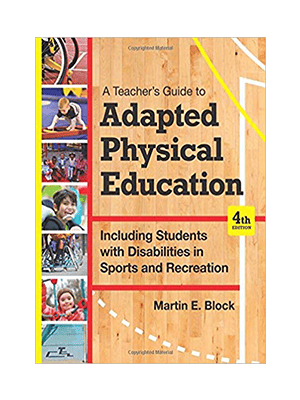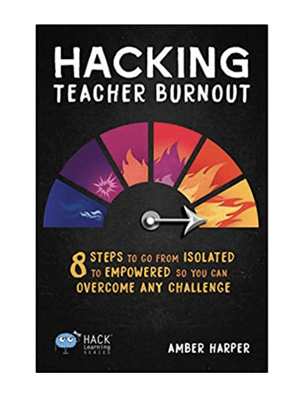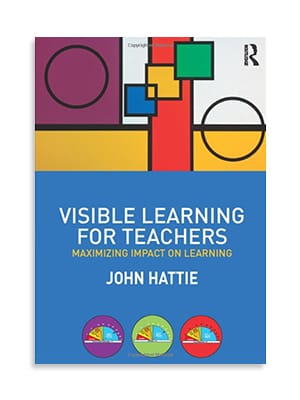Quick Games and Activities to Play in the Classroom
By Shawn Bean, president at Midwest Teachers Institute
Benefits of playing games in the classroom
Enthusiasm: One of the biggest benefits of fun classroom games are students who are excited to come to school. This isn’t just for lower grades, even middle school and older students need more than just school work to get them through the day. And these days, with the push for making up so much “learning loss” out there, many people have been pushing away from fun classroom activities due to outside pressure.
Mental breaks: A fun activity can also help students who need brain breaks. In my classroom I always try to emphasize that we work hard and play hard. Even a short break can help students reset for a couple of minutes.
Cooperation: Students also need to learn to cooperate with others, and nothing makes that easier than providing them a game with some critical thinking skills.
Better retention: Games help many students not only learn better, but remember what they’ve learned. It’s the way of the world, get used to it. You’re part teacher, part entertainer.
Time filler: At the end of the day, sometimes you just need a little something to fill in the extra time.
So bust out a sheet of paper, it’s time to take some notes on games you should be checking out. Whatever your lesson plan looks like tomorrow, you’ve probably got room for at least one of these. Your kids will thank you.
Devices needed
From review games to fun activities to get kids up and moving, there are plenty of online classroom games available. As much as students have been on devices the last few years, it doesn’t mean they should be avoided. It has more to do with the quality of the activity than the method used.
So grab your devices and jump in with a few of these interactive activities.
- Quizalize
Touting itself as the “best tool for student data and differentiation,” you’re either excited to look or sick of hearing the same buzzwords. Either way, Quizalize is a great interactive game for your students that also allows you to see what your students know.
- GoNoodle
Full disclosure, I teach high school students so I’ve never used this site. But I’ve heard of many people teaching younger children who love GoNoodle and swear that it’s something they couldn’t do without anymore. If you’re stuck looking for an indoor game to play and you need to get kids up and moving, this is your site. Get up and get moving!
- Quizlet
Through the years my classes have had lots of fun playing Quizlet, particularly in learning vocabulary words. A variety of activities are available, and there’s always interesting to play Quizlet Live with the students to see what they really know.
I’ve mixed things up through the years, playing a silent version of the game or taking them to the auditorium so they are all spread out. Or keep it simple and let them sit in small teams together.
Another option is to line up the computers and have the students do a relay race. One student answers while the remaining students wait in line to answer. This keeps one dominant player from doing all the work.
- Blooket
Looking for a fun idea that gets kids excited to compete? Blooket definitely fits the bill, as I can attest by the students yelling and banging on the walls in the room next to mine. A variety of game modes gives you a chance to introduce different types of quizzes to keep students interested. There is also the option to limit the importance of speed, which is a bit rare in most quiz-based games.
- AhaSlides
AhaSlides allows you to add quizzes, polls, and other great things to your presentations. Quickly see who knows the right answer, and if your students have a good idea what you are teaching them with instant feedback. An example of a way this could be used is setting up teams of students to compete against each other to get the highest score on a quick quiz you give. The winning team has the highest score at the end of the presentation.
- Digital scavenger hunt
This is something you’d have to put together yourself, but once you’ve done it you can assemble everything pretty quickly. It can be as simple as giving your students a list of things to find online and then turning them loose. The first team to complete the challenge wins.
If you are looking for some school icebreakers at the beginning of the year with your new students, consider giving them riddles that require them to problem solve as a team.
Teaching health? Show images of body parts and see who can be the first one to identify them correctly.
- Kahoot
A great quiz game for formative assessment, and a good way to get students to look up from time to time. Students see the questions and answers on the projector, and have to match the color for the selection on their devices. It’s also worth noting that this one has had staying power, having existed for almost a decade already. And there’s plenty of Kahoots already created that you can use in a pinch.
Unlike Kahoot, this game is student paced. A large library of content already created, and easy to create your own customized games. There’s also an option for read aloud for elementary students or ELL students. One of the best class games that also allows you to incorporate itself into lessons, with options such as “spin the wheel” to choose students to answer and a white board option as well.
- Gimkit
Developed by students, Gimkit is probably most similar to Quizizz on this list. The main difference is that questions either cost or gain students money in the game. This money can be reinvested to purchase power-ups to give them an advantage over other students in class. There are more options added all the time, right now there are 10 options for games to play with the class.
- 99math
It’s hard to find math games that keep students entertained. Sorry math teachers, but it’s true. One of the places that can help you with the best games for this difficult subject though is 99math. Simply choose something you want your students to practice and within minutes you’re ready to go.
- Baamboozle
Admittedly a site that I haven’t used myself, but found in my research for this blog post. Millions of teachers use the site to create games for free, and the site was built by a former teacher. FYI, many of the games presented look like they’re more likely to be played by kindergarten students than high school.
Team building
- Classification
Give the students a list of things, then ask them to put all of them into categories. You pick the length of the list to sort, how many categories, and any other limits you want to impose. A nice way to get the students into small groups and thinking outside the box. And it’s low pressure since there aren’t really any wrong answers.
- Silent lineup
Give the students a task, and they have to line up in order without talking. Examples could be birthday order, favorite color alphabetically, or their favorite number. A great game for students to learn to work together, problem solve, and get to know each other.
- Tower building
Students are given a selection of materials and try to build the tallest tower. As long as each group has the same materials you are good. Team members work together to finish before the time limit.
- Relay races
There are many ways you can set this up, depending on the subject you teach. A math teacher could use math facts and problems that need to be solved. A history teacher could have students find the date from a list of events on the topic. Regardless of the subject, once you divide students up, the first one to finish wins.
- Fly swatter
This is one that one of my colleagues uses, and it gets the kids up and moving in the front of the room. Students are in teams, and the dry erase board is filled with tons of answers. Each team gets a fly swatter, and they have to find the correct answer and swat it. Can be set up as a constant one on one match up, or you can run teams to see which one finishes first. A simple game that works for a wide variety of ages.
- Minute to win it
I like to make this a group game, but if you don’t have enough time you can definitely go with individuals. There’s way too many ideas here to list (that could easily be another post), but here’s a good site to get you started.
- Hot seat
The student in the hot seat has to listen to their team members describe a phrase or word. Similar to the old TV game show $100,000 pyramid, except that long time show was one on one.
The Classics
- Charades
Have students come up with a long list of things they like or have learned about. Then take turns pulling cards and seeing if students can act them out and guess the correct answer within a set amount of time.
- Secret word
This one can be done several ways, depending on how you want to play it. One option is to have a word that you choose, and if it comes up in conversation the student wins. You can choose whether or not to give hints, but you are looking for it to happen naturally in a conversation. Another version is to give groups or individuals a chance to ask questions, seeing how long it takes to get to the secret word.
- Blind artist
The team has to instruct the artist to draw a picture. The key is that the group can’t see what the drawing is until it’s finished. The key is they can describe the item but can’t say exactly what it is. A fun game to teach kids communication skills.
- Simon says
This one is probably better for primary students than older kids, but it all depends on the attitude of your students. A classic game that is usually less about learning and more about social skills.
- Hangman
A fun way to show off your drawing skills. And if you aren’t good, even better. It makes you more human. Just pick a word or phrase you’ve covered, or will be covering in an upcoming unit.
- Four corners
Obviously there are many ways this one can play out, but one of my favorites is to make it similar to the game “apples to apples.” The first person is removed from the room and will enter the room again blindfolded (so no one influences them). Then the rest of the students have 4 possible choices to a question and go to their respective corners. The first student then enters the room again and makes his choice, all the students standing in that corner get a point. Keep going until you have one last person standing, and there’s your winner
- Would you rather?
A great way to get students thinking critically about a topic, this game requires students to make a tough decision between 2 choices that are usually both really good or really bad. Your choice.
- 20 questions
Choose something from your lesson and give the students the chance to guess right in 20 questions. All questions must be yes/no. Can be adapted so everyone gets a guess. Another thing to consider is not allowing anyone to guess the correct answer until the whole class has had a chance to ask a question.
- Scattegories
Students use a white board or piece of paper for this quick game. Give the students a set amount of time to come up with as many words in that category as you’ve created.
- Bingo
It’s amazing to me how a bingo game will captivate students of all ages. Keep some cards available and some small pieces of paper, and you can even use a random bingo number/letter generator to make things easier.
Looking to switch things up? Use content from your class that students must know the answer to your question
- Red light green light
Of course most people are familiar with the concept of this game, which was a shocker for those watching Squid Games in 2021. A way to make this work in a non-traditional way (without the violence) would be to have students competing to complete a series of tasks while a student is in the front of the class directing traffic. Anyone caught is either out or has to start over from the beginning.
- Hot potato
Students sit in a large circle and pass around an object or ball. When the music stops the person holding it is out. You can turn this into an interactive review game by making them answer questions before they can pass to the next person.
- Hot seat
The student in the hot seat has to listen to their team members
- Beach toss
All you need is a cheap beach ball and a permanent marker and you’ve got the best way to get students talking in class. Write a problem, question, or anything you want on each section, then they answer whichever section their right hand is on.
- Heads up seven up
One version is to choose a certain number of students to walk around and push a students thumb down. Then they guess who it was. Another version is to pick one person out of the chosen group, and they get to be the one walking around.
- Silent ball
Better for younger students, especially when you just need a minute without anyone talking. Students sit in a circle or at their desks, then pass a ball back and forth. They are out if they talk, drop the ball, or make a bad pass. Because sometimes you just need a quiet game to keep your sanity.
- Pictionary
Just like the board game, but you can feel free to develop your own words. Just give the students words to draw, and the rest of the class (or their groups) try to figure out what the picture is.
- Jeopardy
Always a great option for a review game, and things are easier now with technology to set up. A great option to get started is Factile, a site that allows you to get started in a short amount of time.
Summary
These are just a few ideas, and you’ll find how they fit into your classroom with a little experimentation.
As a veteran teacher, I can say that even the best-laid plans need a backup, and having one of these games in your back pocket ready to go can make all the difference when you are stuck in your room with no internet and 20 minutes to burn.
If you know someone who could benefit from these ideas, please share it with them. That’s what we do at Midwest Teachers Institute, we’re teachers helping teachers.
And if you’re looking for graduate classes or a master’s degree, we’ve got that also, all at an affordable price.




























